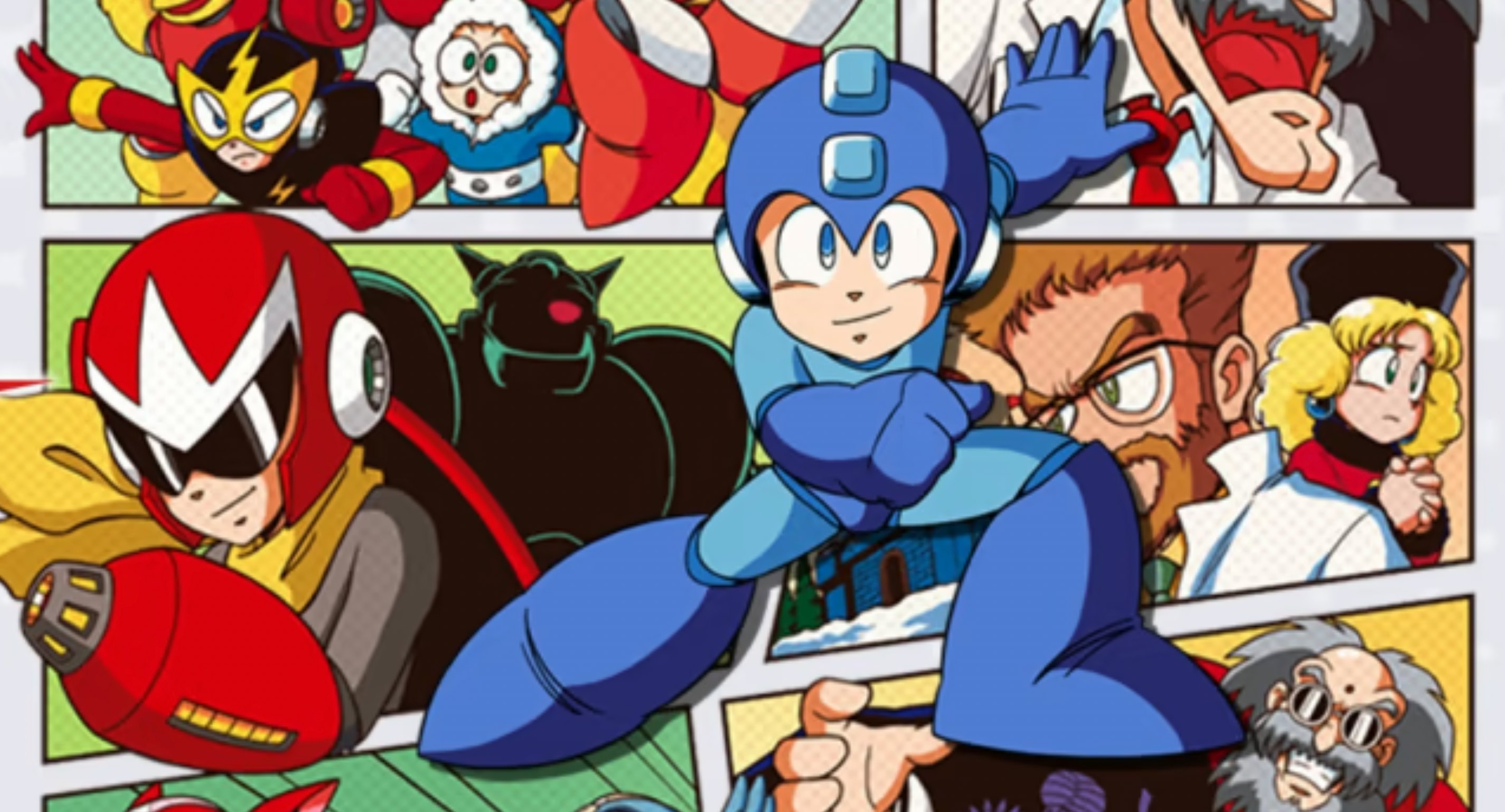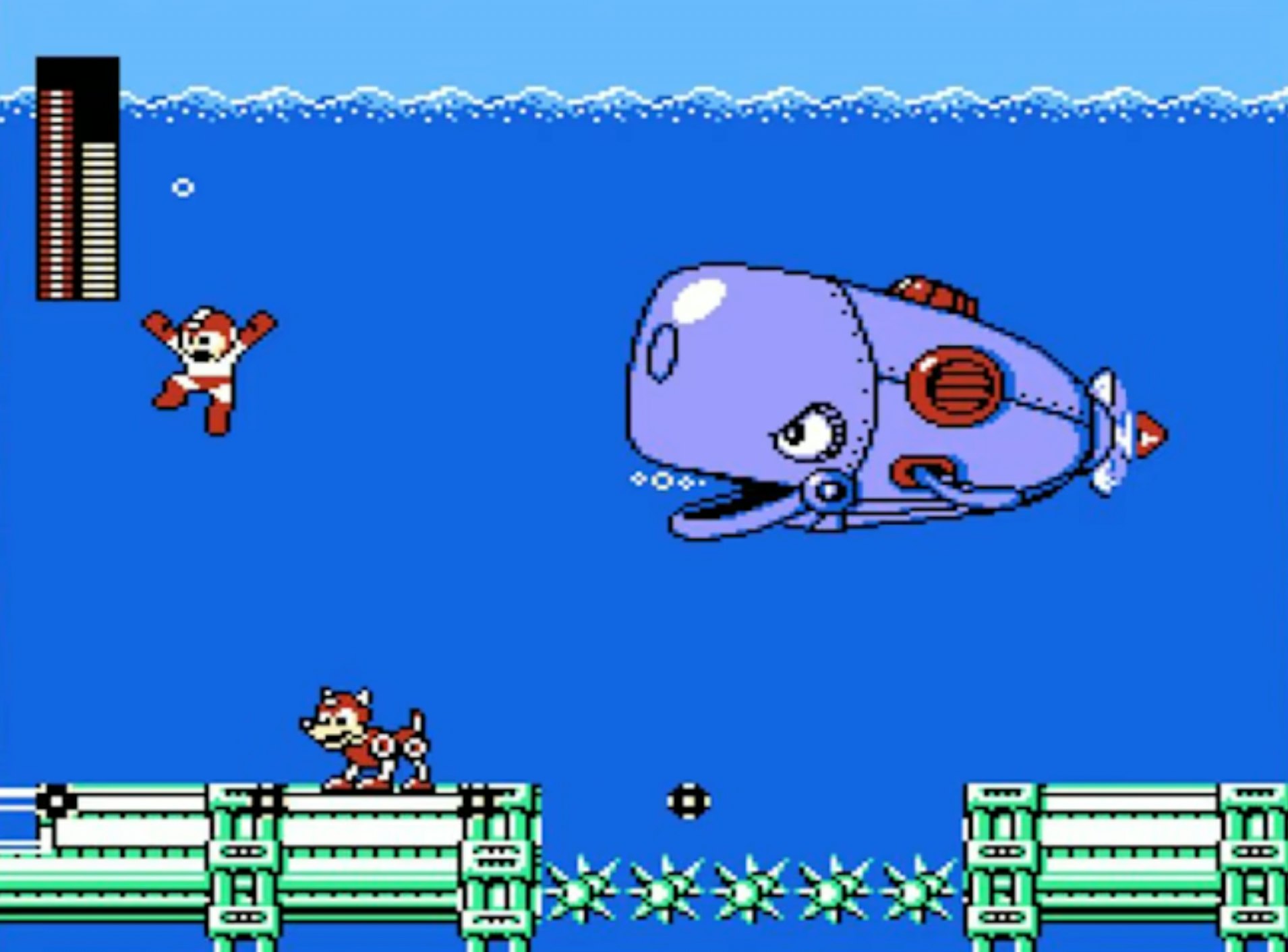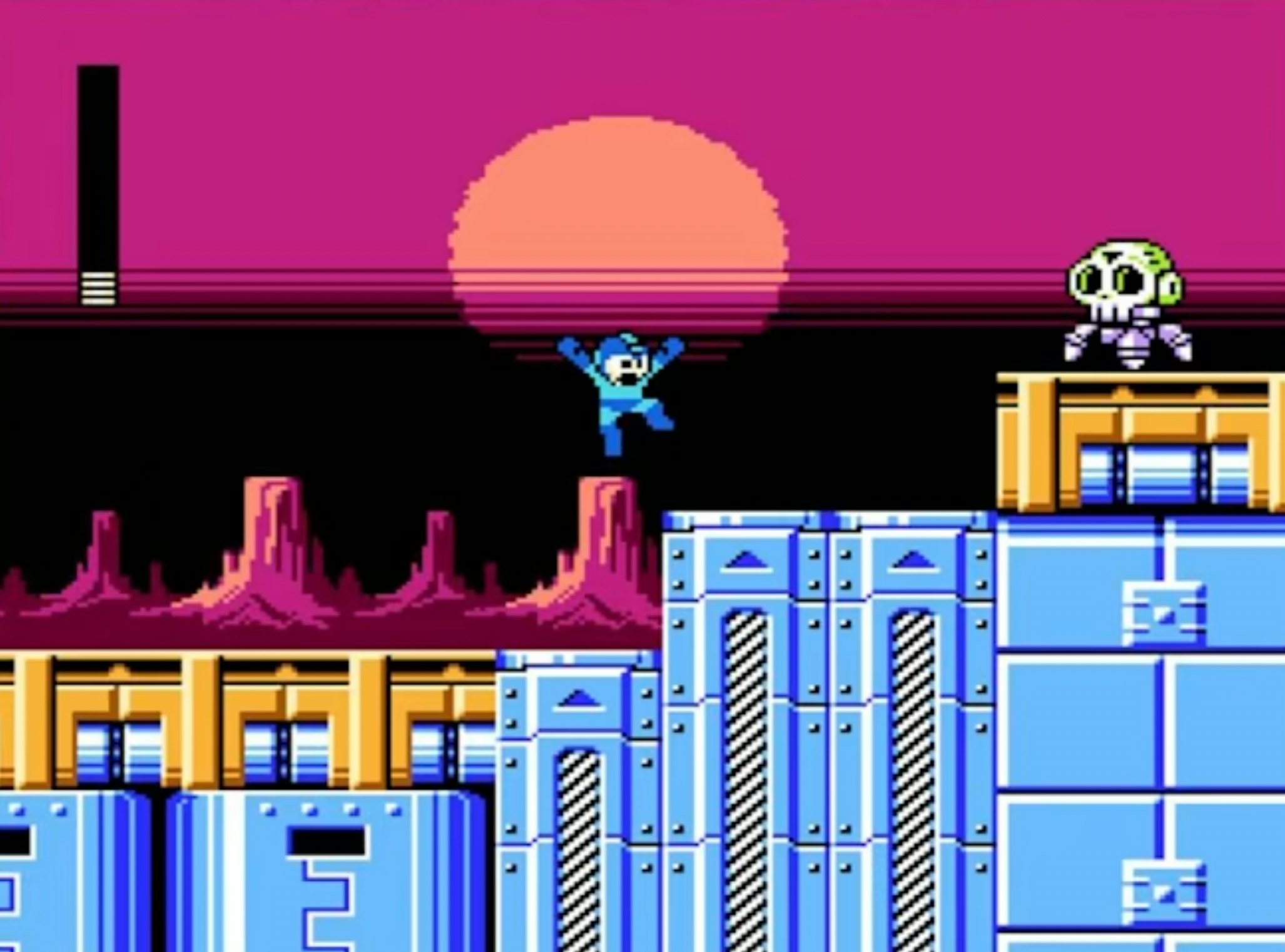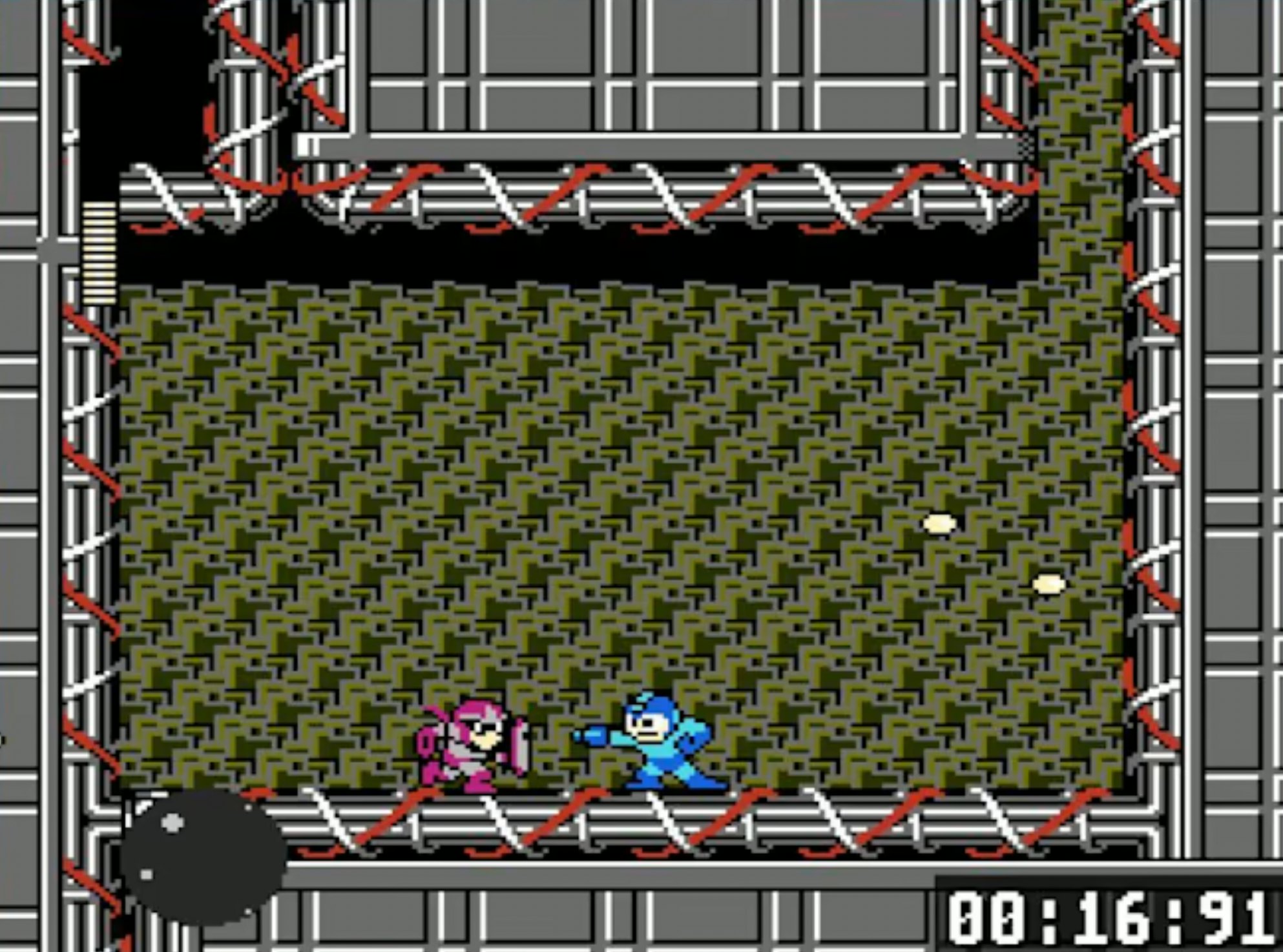
I hate Mega Man.
As a kid, when the NES originals were shiny and new, I would go to my friend’s house and gape at the colorful robot action as his older brother plowed through level after level. The lack of smooth scrolling meant each new screen held a surprise. And often, that surprise ended with a life-ending pit of spikes, the Blue Bomber falling and exploding into a slow-motion firework of 8-bit shrapnel.
Fun to watch? Oh yeah. Fun to play, over and over, each explosion dulling with repetition and boiling into aggravation? Not for me.
So it was with some trepidation I opened Nintendo Switch Online to try the latest additions to the Game Boy library: each of the five portable Mega Man titles, from Mega Man: The Wily Wars (a recombination of the first two NES titles) to Mega Man V (the only all-original Game Boy title). And after banging my head against each of them, I have to admit forming a begrudging, slow-burn respect for these games in this particular form. With time (and age) comes an evolution of expected features (and perhaps a devolution in skill).

Back in 1994, the Mega Man games on Game Boy must have been a minor miracle, packing in most of the features of the full-fat NES titles in a diminutive package you could take anywhere. But had I played them at the time, no doubt my precious Game Boy would have been sacrificed to the hard tile surface of my kitchen floor, having smashed it down in frustration. Not only are the games nails-tough in general, with enemy-movement tuned to push you off ledges and gaps requiring you leap at the exact right moment, but the original hardware’s low-resolution screen and slow refresh rate caused the fact action to blur into smeary approximation. In screenshots, it may have looked like Mega Man. But in play? It was almost Mega Man, something like it but not quite.
The emulated versions on Nintendo Switch Online fix both problems. Now, when my slowing response time destroys my poor robot in the face of another segmented mechanical snake, I can simply rewind and try again. And again. And again. There’s still a modicum of frustration, but the time-reversal (a standard Switch feature for remasters of retro titles from this era) defangs the consequences just enough. The eventual victory still rings with that triumphant note unique to pushing through a bottleneck to progress. Only now, I wasted minutes instead of hours.
The superior screen on the Switch hardware (I’m playing on my wife’s yellow Nintendo Switch Lite, with its intact D-pad) means Game Boy games in general retain a crispness heretofore never seen. That bump in resolution and refresh rate aids Mega Man in particular, especially when playing with the Game Boy Pocket filter, which drains the nostalgic green for a more stark greyscale. (Opting for the Game Boy Color filter adds a few hues but paints the famously blue robot a shade of pink.)

So why play the Game Boy versions if all six original NES titles are already gathered together in the Mega Man Legacy Collection? For one thing, if you already subscribe to the base NSO tier, you can hop in and try them out without a separate purchase. But moreover, these Game Boy tweaks to the original point to an earlier time when portable games were discrete from their at-home counterparts. For all the gnashing of teeth over the present gaming discourse of the week, we’re well and truly spoiled for choice in our current generation. Most games, from the tiniest of indies to the biggest of blockbusters, are playable on a 65” 4K OLED flatscreen or our handheld of choice, be it a Switch or SteamDeck or streaming device. The game remains the same.
So there’s something compelling about seeing how developers managed to squeeze down a popular title onto the limitations of Ye Olde Portable. Some fared better than others (the Donkey Kong Land titles ably mimicked the late 16-bit wonders of the Donkey Kong Country series, while arcade hits like Mortal Kombat became unplayable mush) but the resulting title was always additive; a distinct, new vision of the original. Today’s machines are wondrous for many reasons. But their power has taken away this one wrinkle unique to the games industry: the re-working of popular hits for inferior hardware, sometimes into something wonderful and surprising for its very inferiority.

It’s fascinating to play Mega Man: The Wily Wars and think about the decisions being made three decades ago. “We have a hit series,” Capcom’s producers must have thought, “and we need to put it on this new hit system.” Cue the remixed levels, boiled-down palette, and timeless music etched onto the Game Boy’s sound chip. You can play the original NES titles and see the blossoming of an enduring series that remains beloved, if not quite as relevant, some 35 years later. But here is a look at this alternative timeline, the same raw materials moved around due to technical necessity.
Many current indie titles choose to use the aesthetics of this era to evoke the past, when the simple verbs of “jump” and “shoot” were enough to hold our attention. Playing these Mega Man titles for Game Boy on Nintendo Switch Online was enough for me to remember that, in some ways, as much as I tell myself otherwise, I don’t actually want to go back.
I still kind of hate you, Mega Man. But gosh darn it: I respect you.







